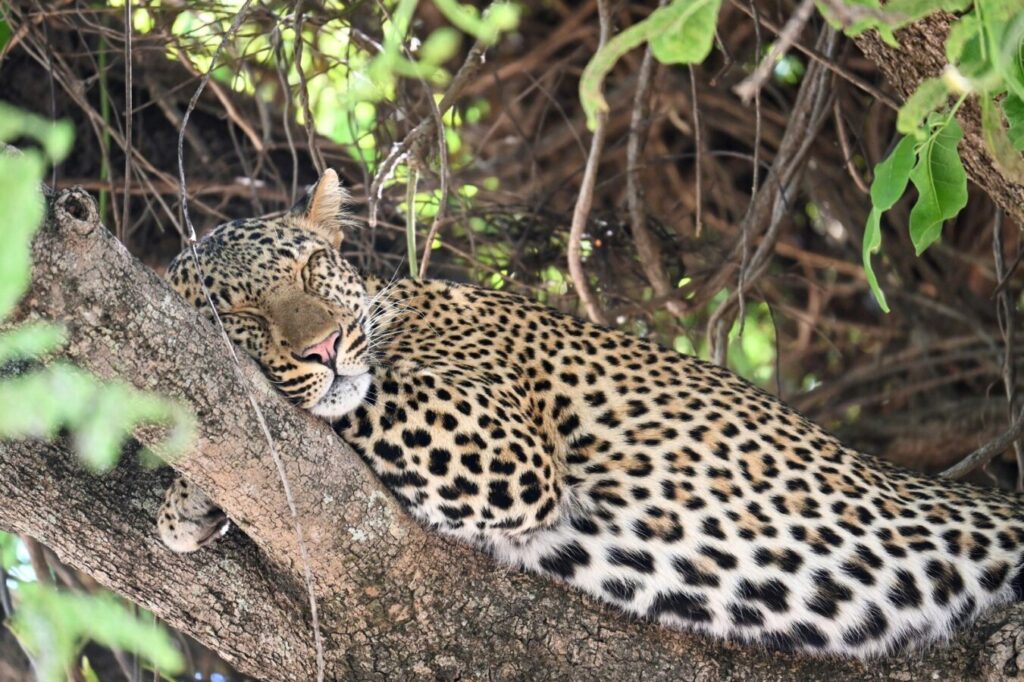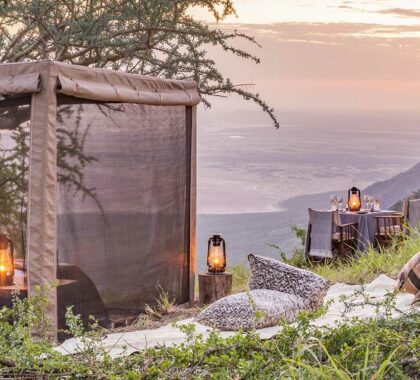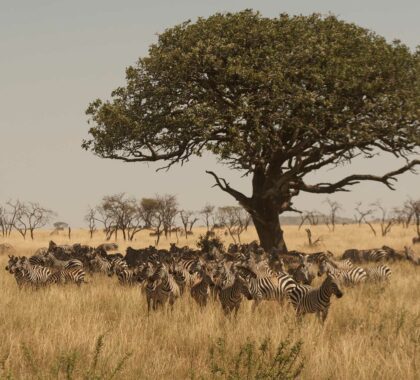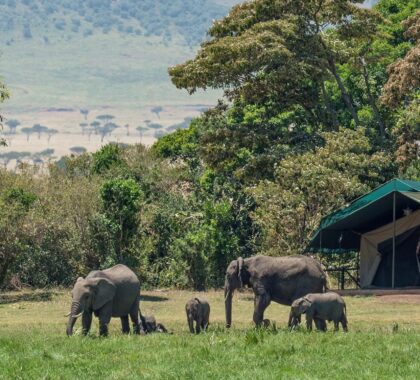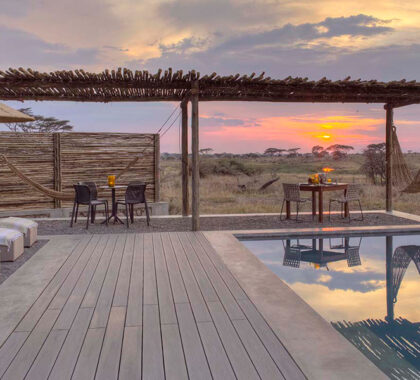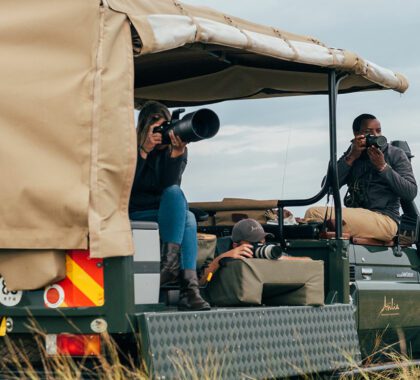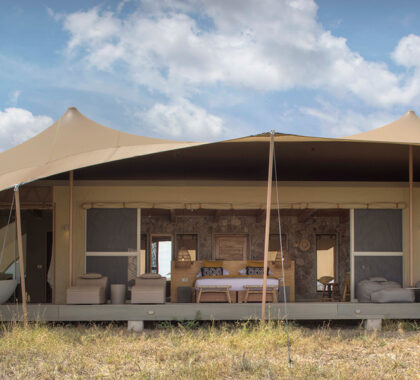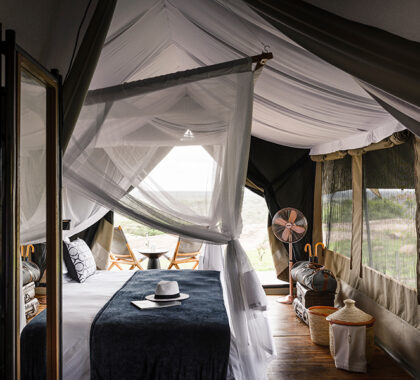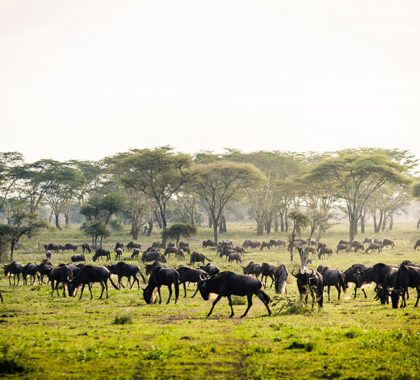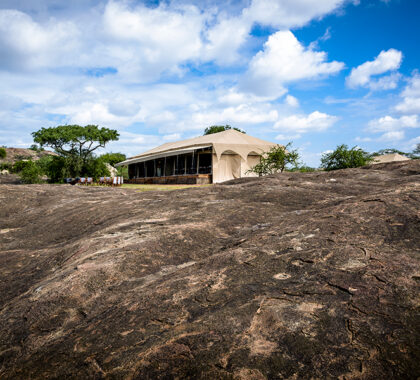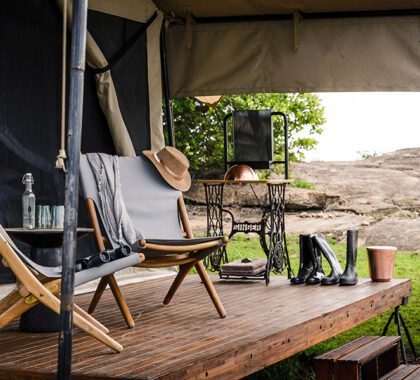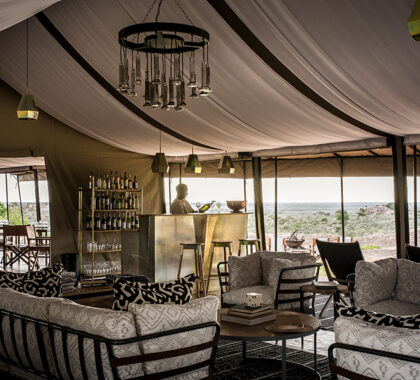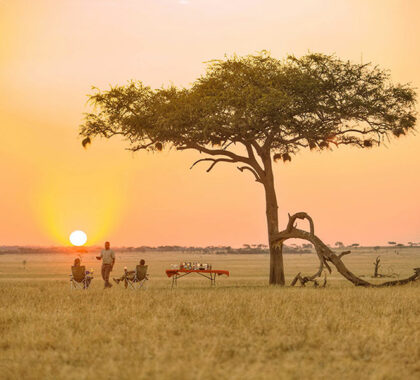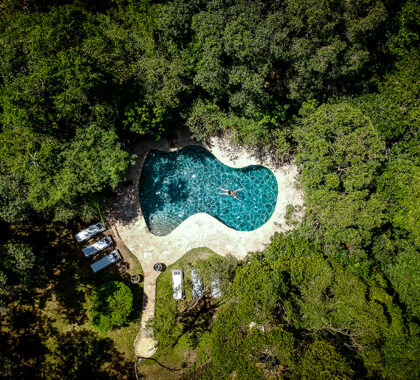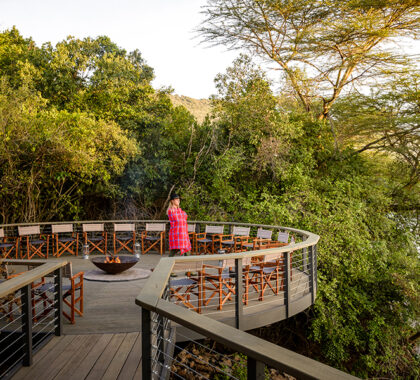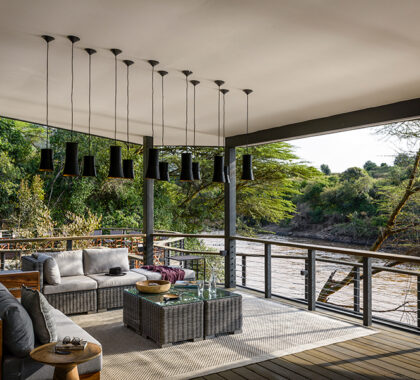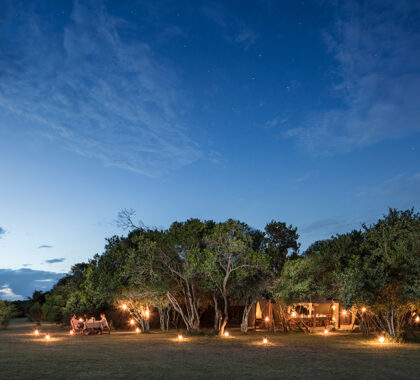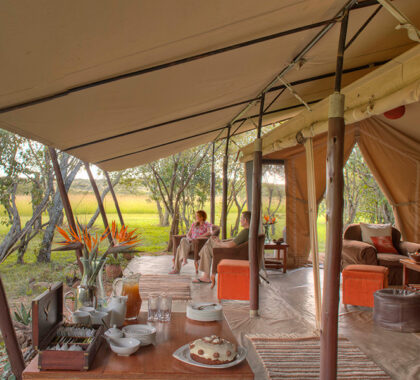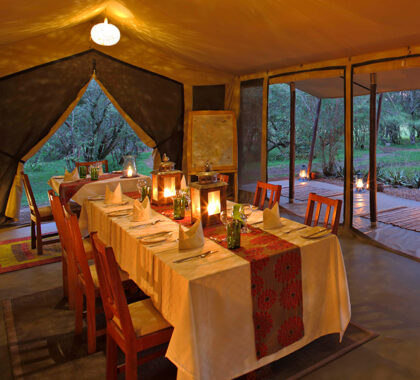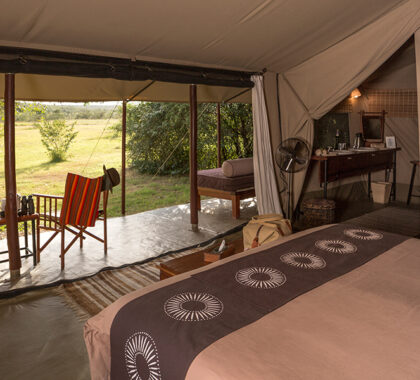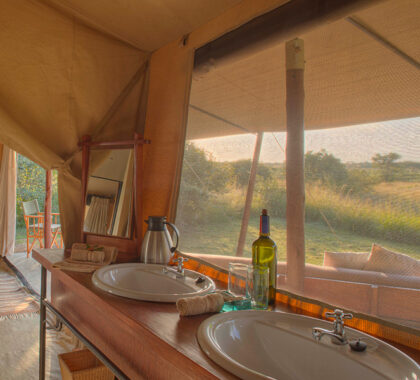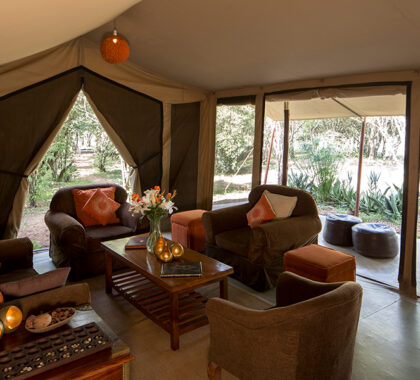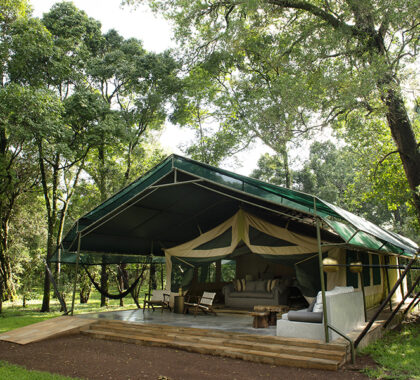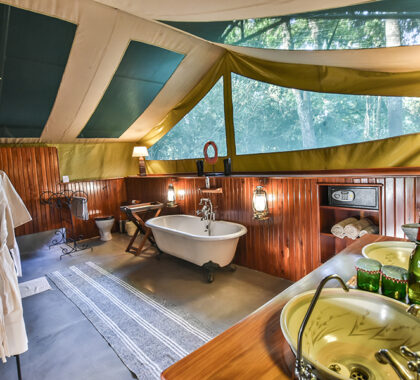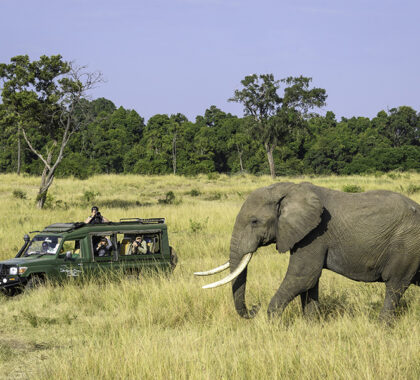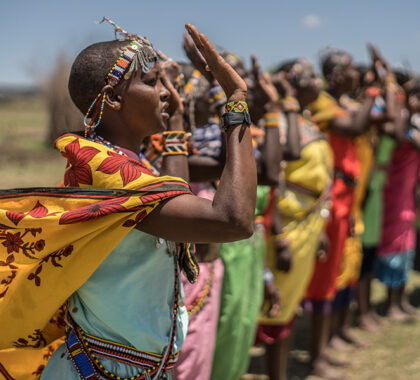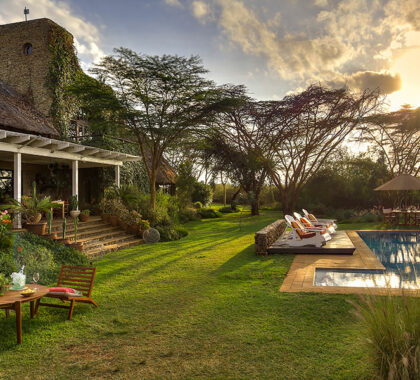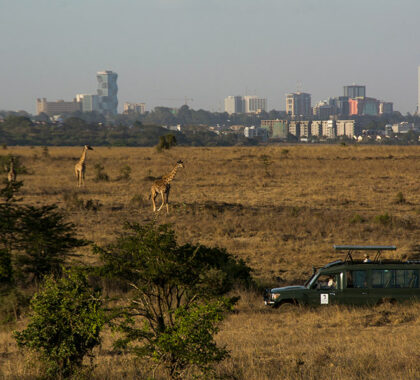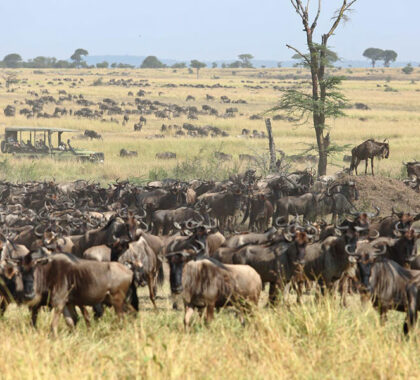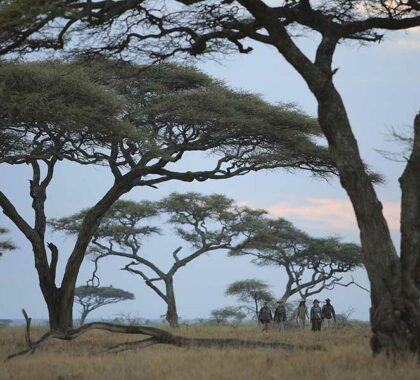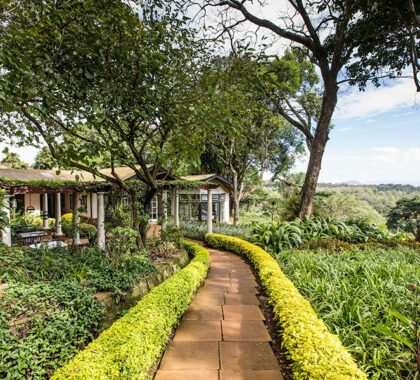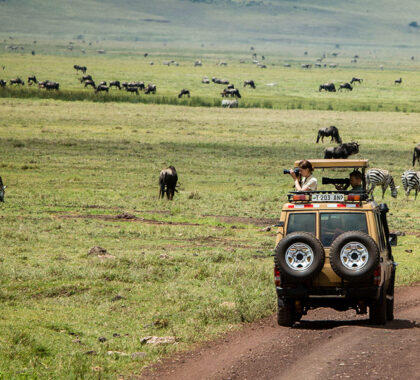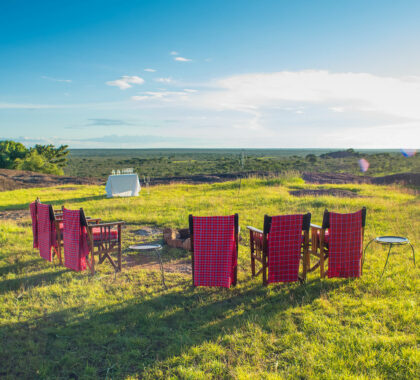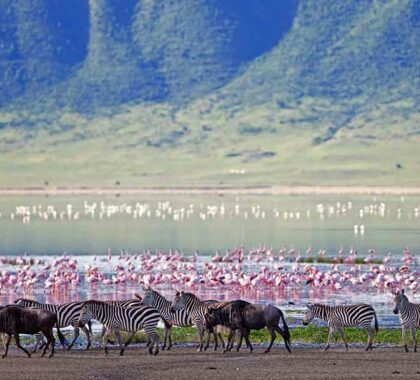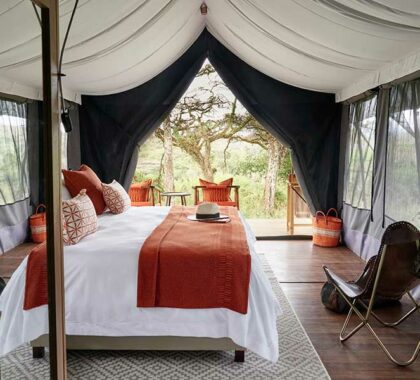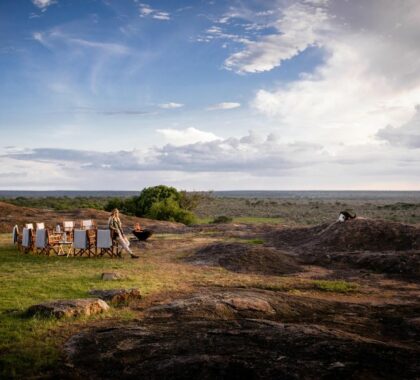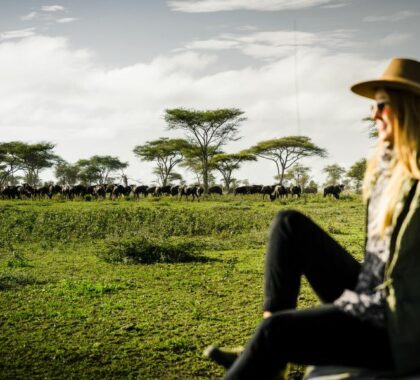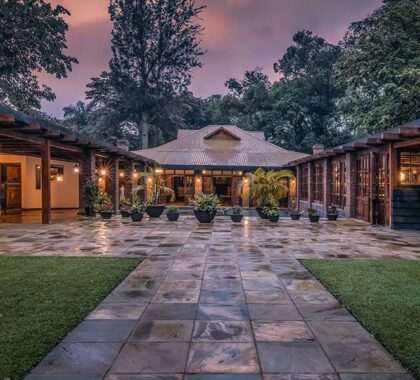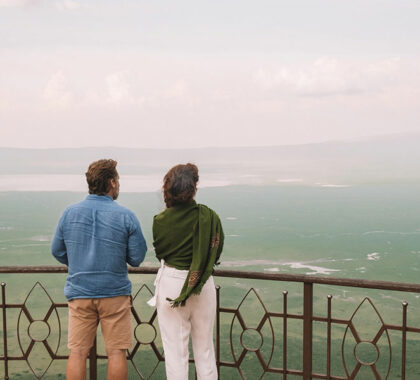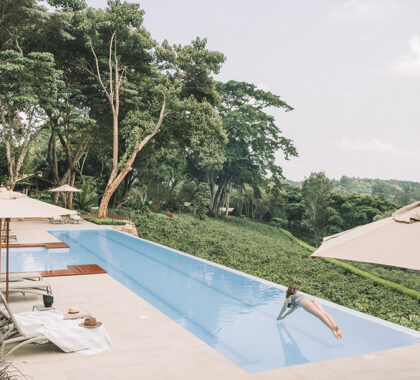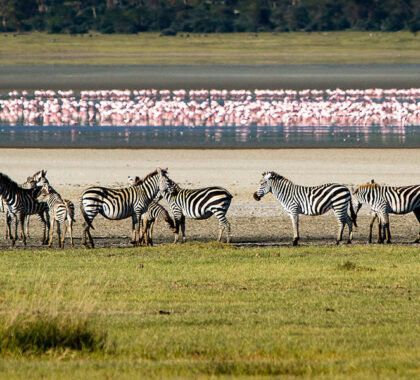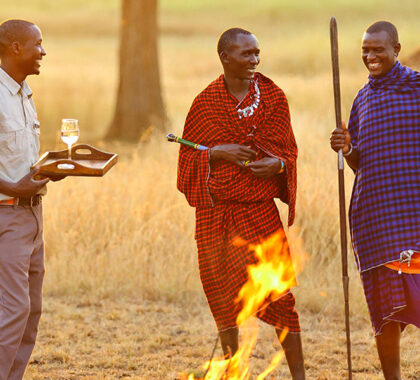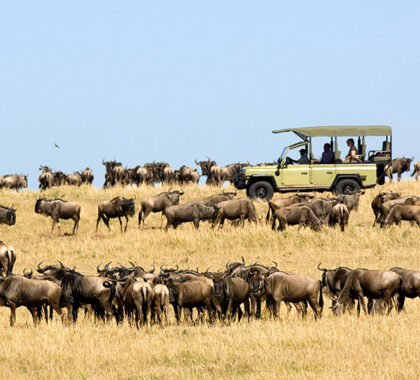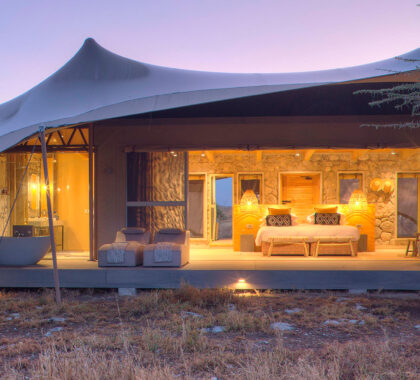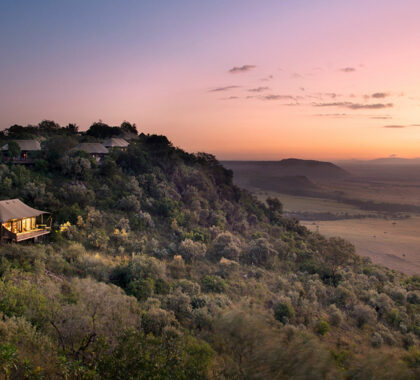The Great Wildebeest Migration in Africa – also known as the Gnu Migration, Serengeti Migration and Masai Mara Migration – is one of the last mass terrestrial wildlife movements left on the planet. It’s the chief reason why so many travellers venture to Kenya and Tanzania for a Migration safari, especially around mid-year.
The Migration is one of nature’s greatest paradoxes: timing is absolutely vital, but there is no way to predict the timing of the animals’ movements. We know that the wildebeest (and a smattering of zebra and antelope) will cross the Mara River – but nobody knows exactly when. We also know that rain will trigger the wildebeest to move onto fresh grazing – but nobody knows exactly when the rain will fall.
Fortunately, we’ve been planning Wildebeest Migration safaris in Africa since 1998. We’ve helped thousands of travellers to be in the best possible place at the best possible time for the best possible price. If you’re looking for expert planning advice, look no further. We’ve compiled all our specialist tips in this handy beginner’s guide to a Wildebeest Migration safari…
“Most exciting holiday we have ever experienced”
– Jorgen
How Does the Great Migration Work?
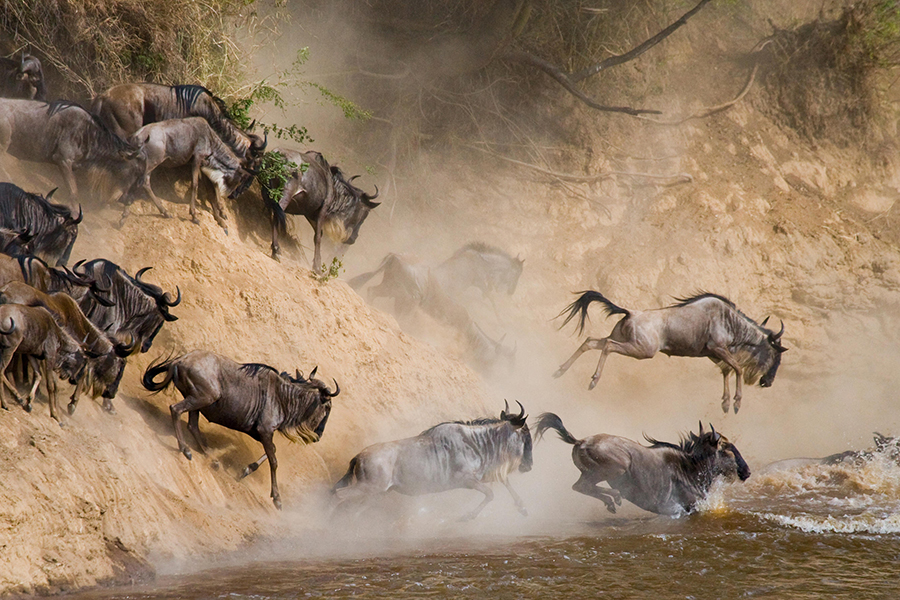
Can the Migration River Crossings be Predicted?
No, not even the wildebeest know when they’re going to cross! Some arrive at the water and swim over immediately; some arrive and spend days hanging around grazing; some arrive and turn back to where they came from. We wish we could predict the crossings, but no-one can. This is why it is best to have as much time on safari as possible if you hope to see a river crossing.
What Time of the Year Do the Wildebeest Migrate?
Most people think that the Wildebeest Migration only takes place between July and October, but it’s actually an ever-moving, circular migration with various but equally exciting events that occur year-round. The popular river crossings usually coincide with safari’s high season (June to October), hence the perception that this is the only time of the year that the wildebeest are on the move or can be seen.
Where Does the Great Migration Start?
Because the Great Migration is a fluid, year-round movement of about two million animals across the Serengeti-Mara ecosystem, there are no defined start or end points. The Gnu Migration is triggered by East Africa’s rains and the animals follow an age-old route in search of fresh grazing and water. This epic journey takes the wildebeest across the Masai Mara plains in Kenya, all the way south into Tanzania’s Serengeti and the edge of the Ngorongoro Crater, before circling up and around in a clockwise direction.
Why Do Wildebeest Migrate?
It is generally believed that the Great Migration in Africa is dictated primarily by the wildebeest’s response to the weather. They move after the rains and the growth of new grass, essentially following a natural instinct to find food to stay alive. Some experts believe that the wildebeest are triggered by distant lightning and thunderstorms, but there is no scientific proof of it.
What Happens When?
A Month-by-Month Breakdown of the Great Migration
With climate change, the long and short rainy seasons in Tanzania and Kenya are no longer as regular or predictable as they once were. The rains can be late or early, which will throw the whole wildebeest calendar out of synch. This is, once again, why it’s important to plan for as much time on safari as possible. You cannot fly in for two nights, see a river crossing and fly out again – nature simply doesn’t work that way.
This is a very general guideline for where the herds are during the year – bearing in mind that the entire Gnu Migration is triggered by rain, which can be early, late or on time:
January
In January, the herds are in Tanzania’s Serengeti National Park, moving south from the north-east region and into the area near Lake Ndutu. The Serengeti is not fenced, so the herds are free to move where they can find grazing. Remember that although up to two million wildebeest, zebra and antelope form the Serengeti Migration, they are not all in a single herd. The animals break up into mega-herds of thousands or hundreds of individuals at time.
February to March
From February to March, it is calving season (over 8 000 wildebeest babies are born each day!) so prepare yourself for lots of wobbly calves… and lots of heartbreak as fearsome predators swoop in. The Serengeti’s big cats take the lion’s share, but hit-and-run jackals, packs of wild dog, and hyena clans add to the spectacle. It’s a bittersweet ballad; the circle of life played out as a live action drama.
If the short rainy season (Nov–Dec) produced good grazing, the herds feed frenziedly and remain in the Serengeti’s southern plains until they slowly start moving west in March.
April
In April, it’s the start of the long rains (Apr–May) and the herds generally move in a north-westerly direction towards the Moru and Simba Kopjes. The action-packed rutting (breeding) season is in full swing, featuring testosterone-fuelled jousts between males competing for the right to mate with receptive females.
May
In May, wagons roll! The massed herds are on the go, huge columns of up to 40 kilometres (25 miles) in length can sometimes be seen as the wildebeest funnel up into the central Serengeti. Everyone’s moving a little quicker now that the calves are stronger.
June
From June, the wildebeest are usually in the central Serengeti and getting ready for the toughest part of their odyssey. The herds may have split up, with some already crossing the Grumeti River.
July
In July, the Great Migration have reached the Grumeti region and northern parts of the Serengeti and are peering closely at the treacherous waters of the Mara River they have to cross into Kenya. Why? Huge Nile crocodiles, that’s why!
As mentioned, it is impossible to accurately predict river crossings – they depend entirely on the rains and the often unpredictable wildebeest themselves. It’s vital to book your Wildebeest Migration safari in Africa up to a year in advance to get a lodge on or as close to the river as possible – this cuts down on travel time to lookout points. The wildebeest do have historical crossing areas and you may spend days staked out in the hope of seeing the action. We recommend choosing a mobile safari camp that moves with the Migration to ensure you’re in the right place at the right time.
August
August is generally considered the best time to witness the dramatic river crossings from the northern Serengeti into the Masai Mara. You’ll need a passport to cross into Kenya; the wildebeest are exempt. The Masai Mara National Reserve is open to members of the public so for a more exclusive safari experience, head for the private conservancies that are contiguous with the reserve.
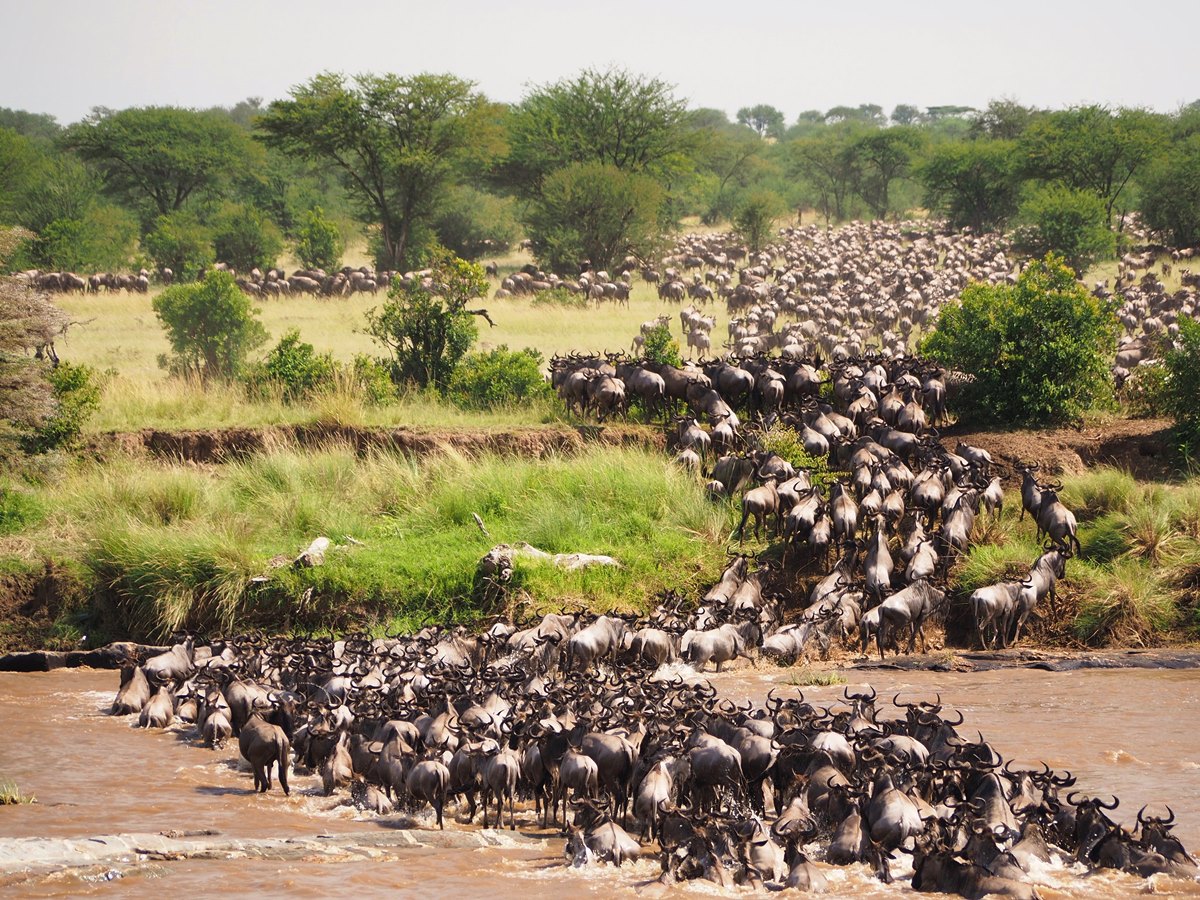

September
In September, the herds break up into smaller groups, as not all the wildebeest migrate into Kenya. Less than half of the animals remain in the northern Serengeti, the rest are swapping war stories in the Masai Mara. So you could still see wildebeest in the Serengeti (just not the mega-herds) but as a general rule of thumb, the Masai Mara is the best place to witness the Migration in September.
October
From October, your best bet is still the Masai Mara, but bear in mind it is a far smaller reserve than the Serengeti and there may be a lot of other visitors. The neighbouring private conservancies are much less crowded and, not only will you still be able to witness the Migration, you will also directly contribute to the Maasai communities who have lived there for thousands of years. Plus you can enjoy off-road game viewing, night drives and walking safaris – activities not permitted in the national reserve.
November
In a ‘normal year’ in November the short rains have begun, propelling the wildebeest to leave the now denuded grasslands of the Masai Mara and head back into the rejuvenated Serengeti. Bear in mind that the rain can be late or early, which is also unpredictable.
The herds are generally on the move, but can be seen around the north-eastern parts of the Serengeti where they may split into smaller groups for their journey southward.
Tip: although many people think of Africa as a hot place, the rain can cool things down dramatically. You’ll be out on early morning and late afternoon game drives – the sun is at its weakest during these times. Take at least one pair of trousers, closed shoes that can cope with mud, and a fleece or waterproof jacket.
December
In December, fresh grazing sees the wildebeest move south, covering the northern and eastern Serengeti to feast and prepare for yet another death-defying, 3 000-km (1 900-mi) odyssey.
Travel Article
10 Best Serengeti Safari Tours
Travel Article
10 Best Masai Mara Safari Tours
Travel Article
Kenya or Tanzania: Which is Best for Safari?
When is the Best Time to Go on a Migration Safari?
Now that you know how the Great Wildebeest Migration in Africa works, you can easily see that the best time to go depends entirely on which events you’re personally interested in seeing. Remember, the Serengeti and Masai Mara’s abundance of wildlife and wide open landscapes make them fantastic year-round safari destinations.
Event
Approximate Time
Place
Calving (Birthing) Season
February to March
Southern Serengeti
Rutting (Breeding) Season
April to May
Western & Central Serengeti
Grumeti River Crossings
May to June
Central Serengeti
Mara River Crossings
July to August
Northern Serengeti & Masai Mara
On the Move
November to January
Masai Mara & Northern Serengeti to Southern Serengeti
Note: the above are approximate dates only. The Wildebeest Migration is a year-round, circular journey and the river crossings cannot be predicted. Sometimes the herds stay put for two weeks, other times they could cross four times in one day!
Key Facts to Remember
The bulk of the Migration takes place in the Serengeti.
It’s a year-round, circular journey.
River crossings cannot be predicted, but generally occur between May and August.
The animals are strung out across a large area – there are always fore-runners and stragglers.
Your best chance of seeing river crossing may involve spending all day at a site where the wildebeest have massed. If you are a keen photographer, your best opportunities may occur around midday when the sun and glare are at their harshest, so make preparations to accommodate this.
Ready to Plan Your Migration Safari?
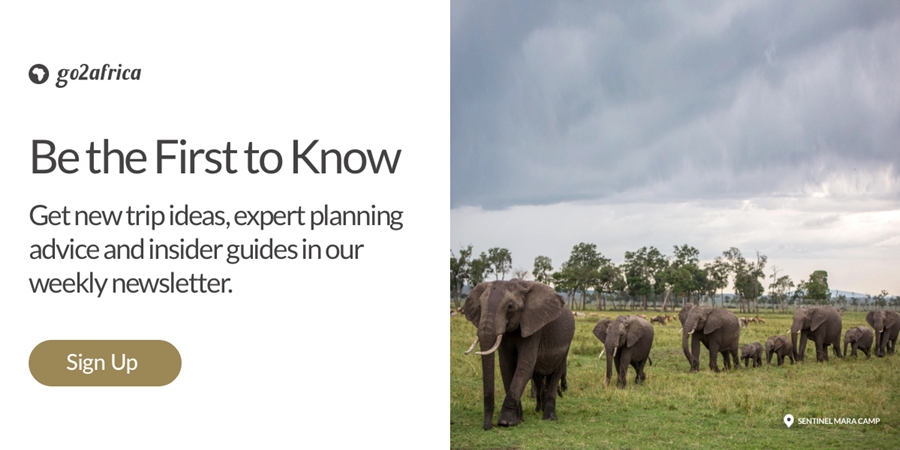

Where are the Best Places to Stay on a Migration Safari?
Accommodation for a Great Migration safari can be divided into two broad categories: permanent lodges and mobile camps. Each have different advantages, but choosing one depends on what is important to you:
Mobile Camps
Permanent Lodges
Bathrooms
En suite tents with flush toilets
Usually bucket showers
Basins may use jug water
There may not be running water
En suite with hot-and-cold running water
Plumbed showers
Flush toilets
Maybe bathtubs
Maybe outdoor showers
Wi-Fi
Not always
Usually
Power / Electricity
Solar
Generator
Solar
Generator
In-room Charging
Generally communal charging point
Usually
Tips for Choosing Migration Safari Accommodation
Book as soon as you know you want to go – don’t procrastinate! Lodges and camps are small and fill up very quickly.
The river-crossing season is the most popular, so start planning at least a year in advance.
If you want inter-connecting tents or family suites, book as early as possible as there are limited numbers of these available.
If you’re travelling with very young children, consider fenced accommodation, babysitting services and your own private game-drive vehicle.
If you have mobility challenges, ask for rooms as close to the mess areas as possible to avoid long walks, often on soft sand.
If you are on a budget, choose good-value accommodation so that you have extra time on safari. This increases your chances of seeing births, kills or crossings.
Our Recommended Serengeti Migration Accommodation:
Accommodation
Namiri Plains
Activities Travellers Enjoyed
Bird watching
Bush dining
Bush walks
Accommodation
Sanctuary Kichakani Serengeti Camp
Activities Travellers Enjoyed
Sundowners
Accommodation
Ubuntu Migration Camp
Activities Travellers Enjoyed
Bird watching
Bush dining
Cultural visits (additional cost)
Our Recommended Masai Mara Migration Accommodation:
Accommodation
Sanctuary Olonana
Activities Travellers Enjoyed
Game drives
Guided walks
Hot air ballooning
Accommodation
Encounter Mara
Activities Travellers Enjoyed
Bird watching
Bush dining
Children’s activities
Accommodation
Governors’ Il Moran Camp
Activities Travellers Enjoyed
Day tours
Game drives
Guided walking safaris
Our Favourite Places to See the Great Migration
What are the Best Migration Safari Tours?
Our tour ideas are exactly that – sample itineraries to give you an idea of costs, flights and how different destinations work together. All are completely customisable to your personal timing, budget and preferences.
Tours & Safaris
East Africa’s Migration, Safari & Highlands
Tours & Safaris
Good Value Year-Round Migration & Safari
Tours & Safaris
East Africa Year-Round Migration Safari
Need More Inspiration?
Tips for Planning Your Migration Safari
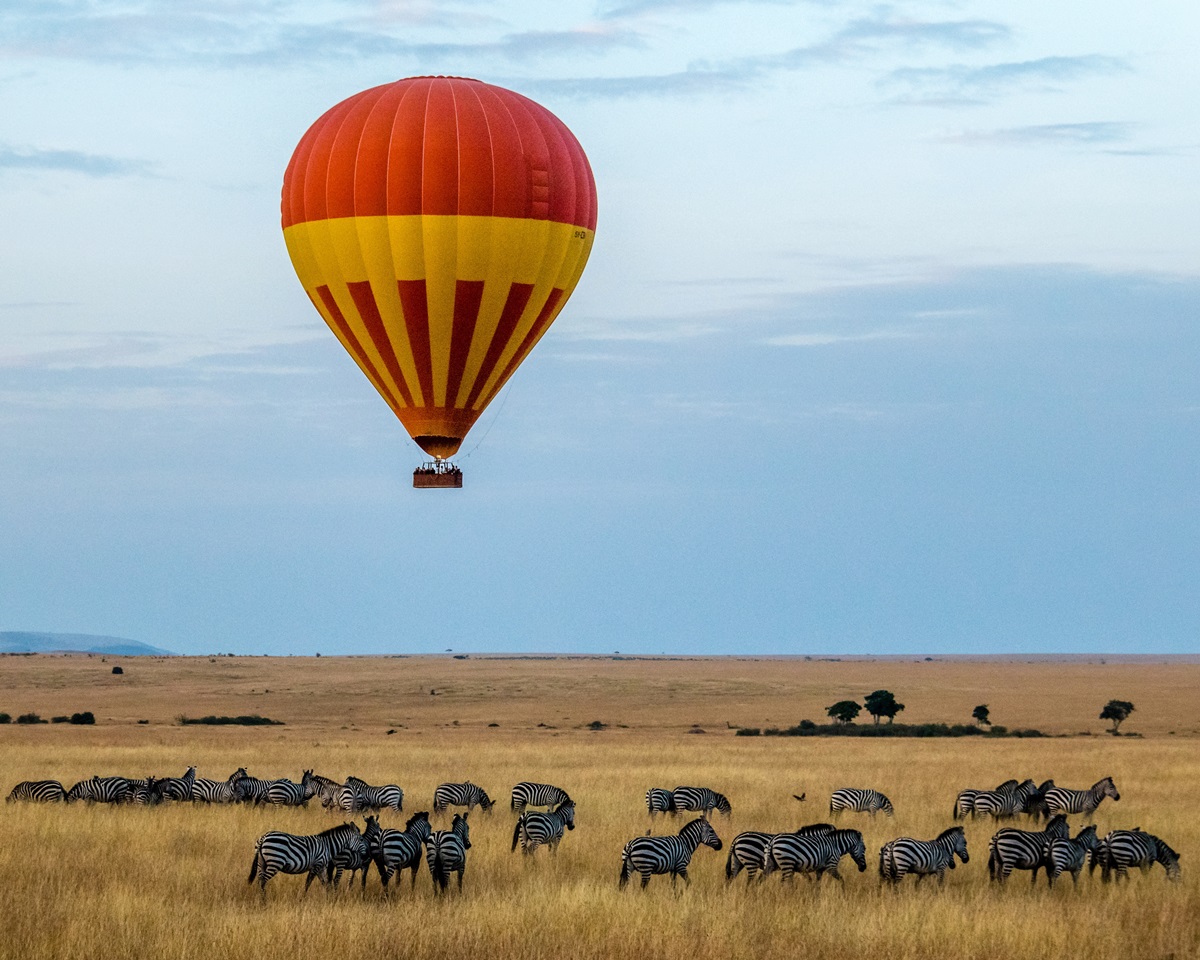

1. Book Early – At Least a Year in Advance
Lodges and camps fill up fast, especially for a Great Migration safari from June to October. Remember, this is safari’s high season and when the popular river crossings happen, but you can see the herds any time of the year.
2. Arrange Your Timing Carefully
The Migration is a fluid, often unpredictable affair. It’s important to know where to go and when to go on a Wildebeest Migration safari to ensure your expectations are met. Choose and arrange your timing according to what you want to see and experience.
3. Avoid the Crowds
The Masai Mara National Reserve and Serengeti National Park experience high visitor and vehicle numbers during safari’s peak or high season (about June to October). The private conservancies adjoining the Masai Mara offer exclusivity, luxurious accommodation and excellent game viewing in sole-use areas. You’ll also be offered activities not permitted in the main reserve, such as night drives, bush walks and off-road game viewing.
There are camps in the Serengeti that are located a little further away from the Migration hot spots – meaning you can easily get to all the action, but also retreat to tranquility.
4. Diversify Your Game Viewing
A Wildebeest Migration experience can get busy, noisy, smelly, and far removed from a general Big 5 safari. We highly recommend ending at a lodge or camp that’s located away from the herds to enjoy a bit of tranquility and a diverse game viewing experience.
5. Augment Your Migration Safari
The Masai Mara and Serengeti combine easily with each other, and each can also form the focal point of a larger safari itinerary. We recommend combining the Masai Mara with Amboseli and Laikipia, or adding the Ngorongoro Crater, Tarangire and the Rift Valley Lakes to the Serengeti. You can even go further afield and easily add top destinations like:
Uganda, Rwanda or Congo for the world’s best gorilla-trekking experiences.
Zanzibar, Seychelles or Mauritius for stunning tropical beaches and fantastic diving locations.
Cape Town for superb food and wine, fine art, great shopping, beautiful beaches, plenty of history and culture, and lots of natural beauty spots.
Victoria Falls, the world’s biggest waterfall, for white-water rafting, swimming in Devil’s Pool and taking tea on Livingstone Island.
Travel Article
Top 5 Tips for Booking Your African Safari
Travel Article
10 Best Luxury Safari Camps & Lodges in the Serengeti
Travel Article
15 Best Masai Mara Safari Lodges & Camps
Ready to Plan Your Migration Safari?
Chat with someone who’s been there. Get in touch with one of our Africa Safari Experts to help tailor-make a Wildebeest Migration safari based on your travel wishes:


